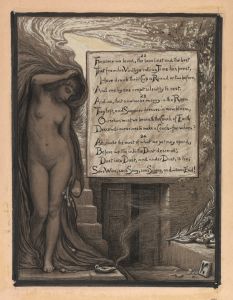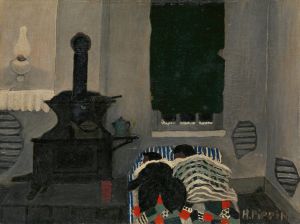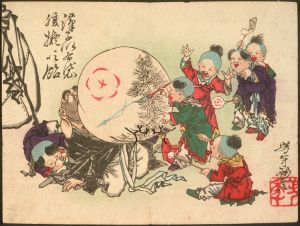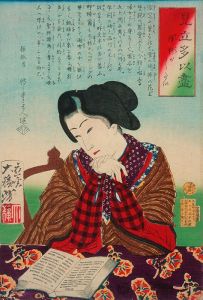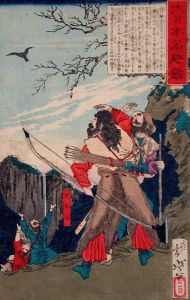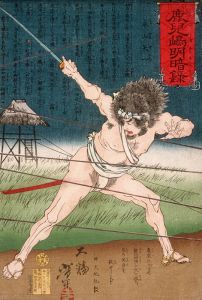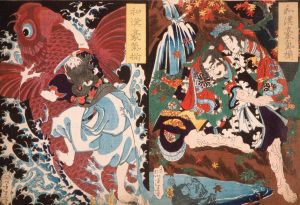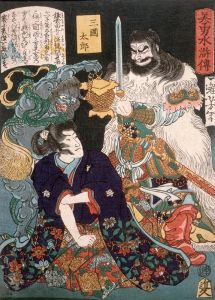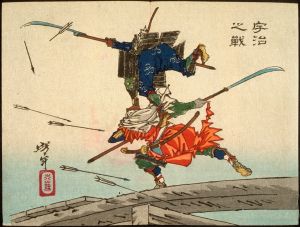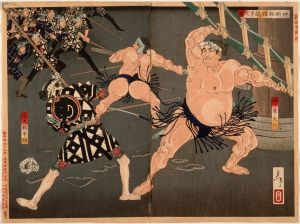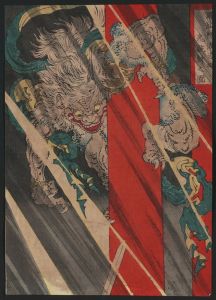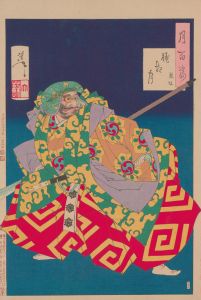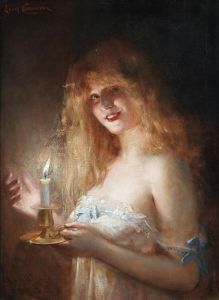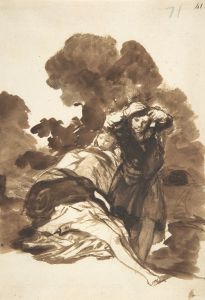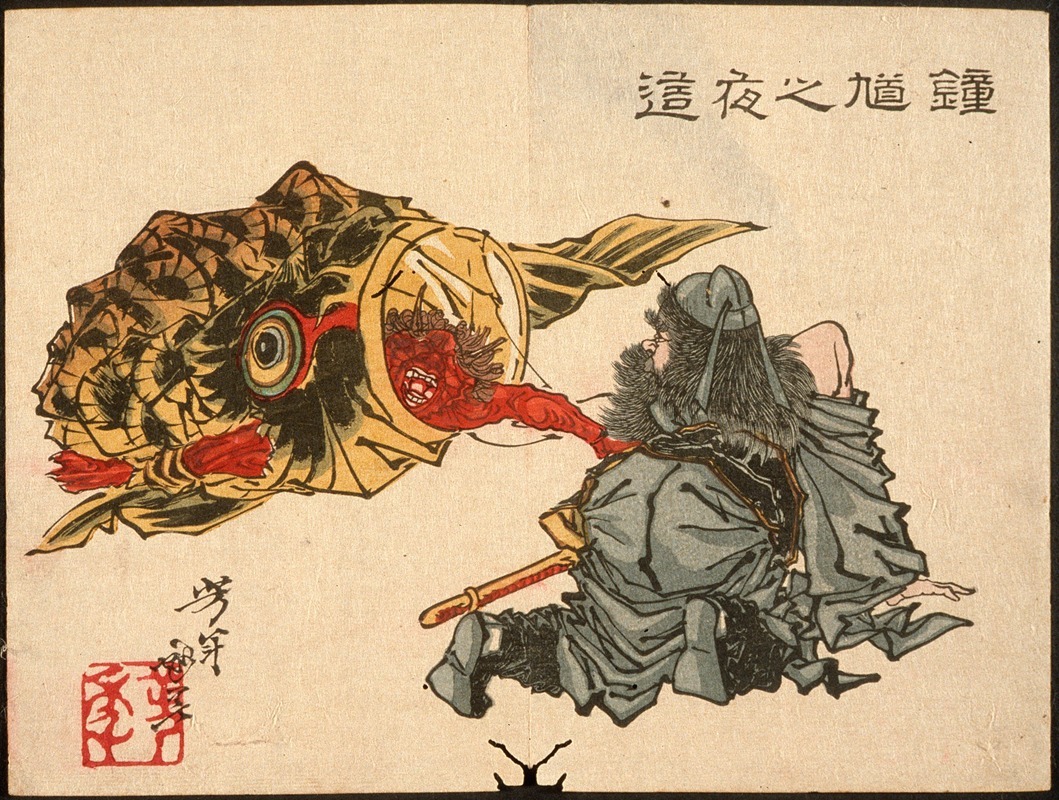
Shōki Creeping Up on a Sleeping Demon
A hand-painted replica of Tsukioka Yoshitoshi’s masterpiece Shōki Creeping Up on a Sleeping Demon, meticulously crafted by professional artists to capture the true essence of the original. Each piece is created with museum-quality canvas and rare mineral pigments, carefully painted by experienced artists with delicate brushstrokes and rich, layered colors to perfectly recreate the texture of the original artwork. Unlike machine-printed reproductions, this hand-painted version brings the painting to life, infused with the artist’s emotions and skill in every stroke. Whether for personal collection or home decoration, it instantly elevates the artistic atmosphere of any space.
"Shōki Creeping Up on a Sleeping Demon" is a woodblock print by the renowned Japanese artist Tsukioka Yoshitoshi, who was active during the late Edo and early Meiji periods. Yoshitoshi is celebrated for his innovative approach to the traditional ukiyo-e art form, and his works often depict historical and mythical subjects with a dramatic flair. This particular print is part of his series "One Hundred Ghost Stories of China and Japan" (Wakan hyaku monogatari), which explores supernatural themes and folklore from both Chinese and Japanese traditions.
The print features Shōki, a legendary figure in Chinese folklore known as Zhong Kui, who is famed for his ability to vanquish demons. In Japanese culture, Shōki is similarly revered as a demon queller and is often depicted in art as a fierce and imposing figure. In Yoshitoshi's depiction, Shōki is shown stealthily approaching a sleeping demon, capturing a moment of tension and anticipation. The composition highlights Yoshitoshi's skill in conveying narrative through visual elements, as well as his ability to blend traditional and modern artistic influences.
Yoshitoshi's work is characterized by its dynamic use of color and line, and "Shōki Creeping Up on a Sleeping Demon" is no exception. The print employs a vivid palette and intricate detailing, which are hallmarks of Yoshitoshi's style. His ability to convey emotion and movement through his prints has earned him a lasting place in the history of Japanese art.
The series "One Hundred Ghost Stories of China and Japan" was created during a period of significant cultural and political change in Japan, as the country was transitioning from the Edo period to the Meiji era. This era was marked by the opening of Japan to the West and the subsequent modernization and Westernization of Japanese society. Yoshitoshi's work reflects a deep engagement with both traditional Japanese themes and the new influences that were permeating the culture at the time.
Yoshitoshi's prints, including "Shōki Creeping Up on a Sleeping Demon," are notable for their psychological depth and complexity. They often explore themes of fear, power, and the supernatural, inviting viewers to contemplate the boundaries between the human and the otherworldly. His work has been influential in both Japan and the West, contributing to the appreciation and understanding of ukiyo-e as a significant art form.
Today, Tsukioka Yoshitoshi is regarded as one of the last great masters of ukiyo-e, and his prints are highly sought after by collectors and museums around the world. "Shōki Creeping Up on a Sleeping Demon" exemplifies his mastery of the medium and his ability to capture the imagination of his audience through compelling storytelling and artistic innovation.





